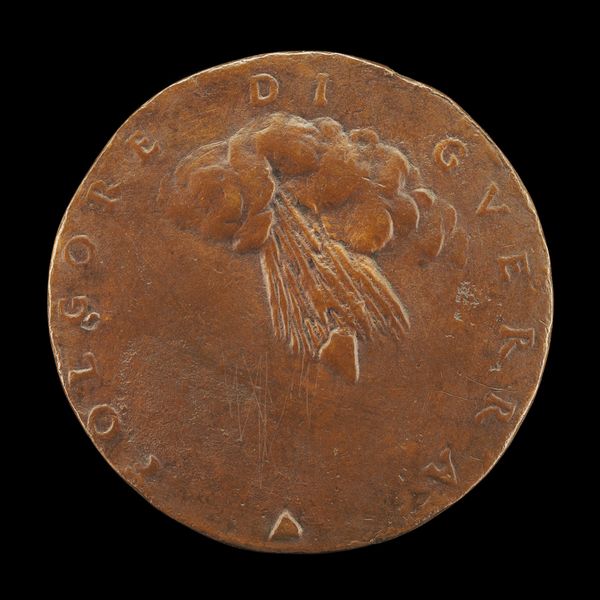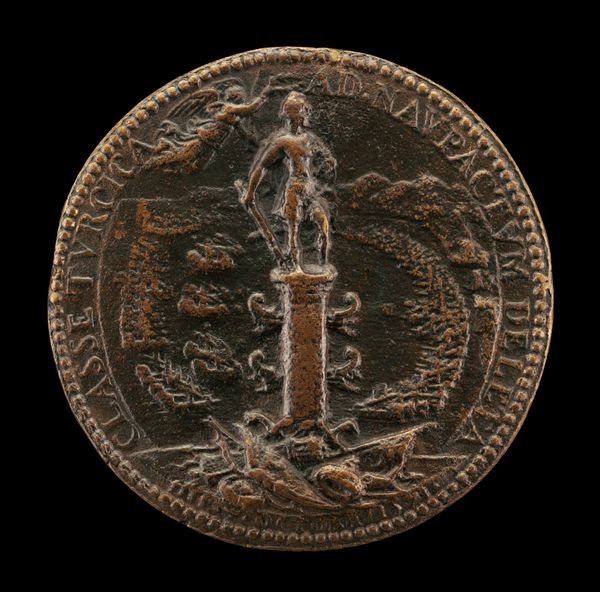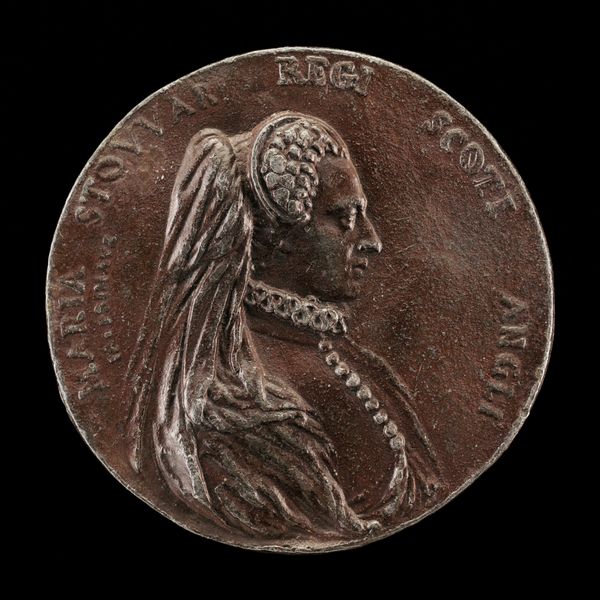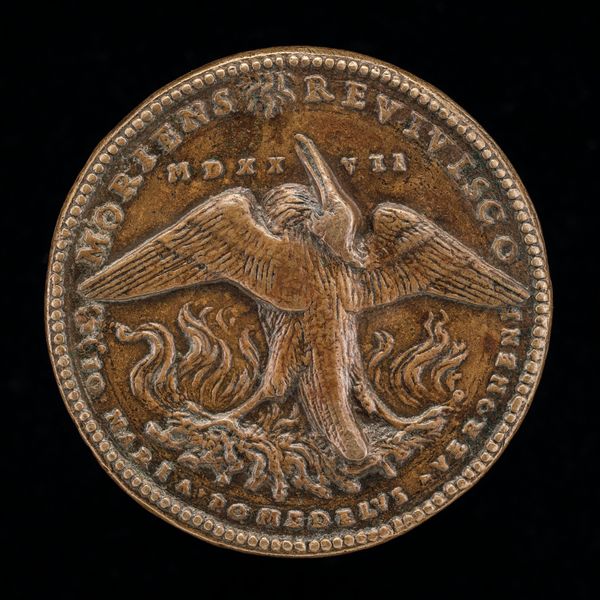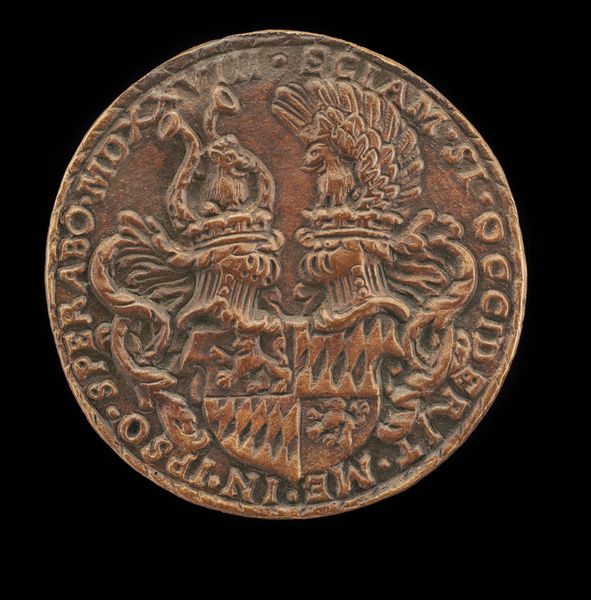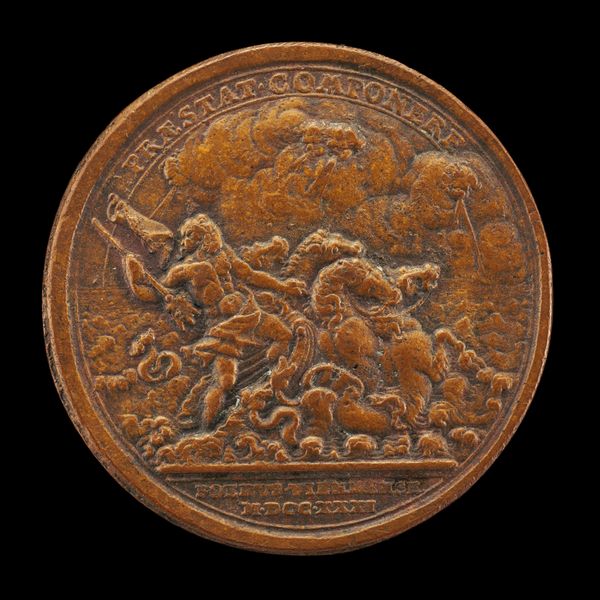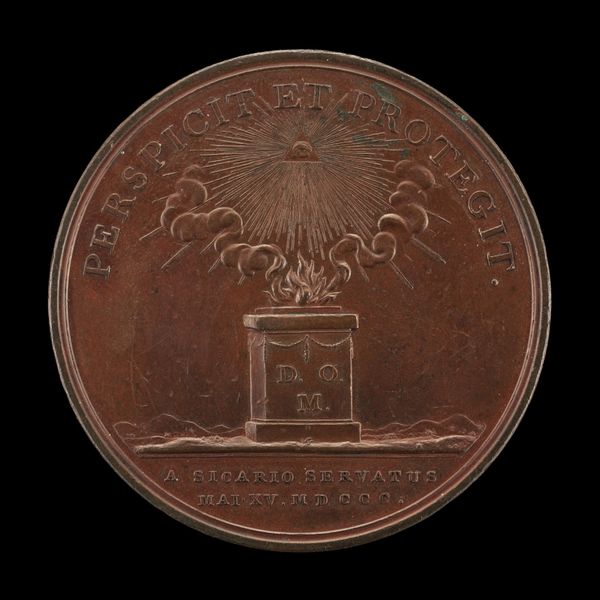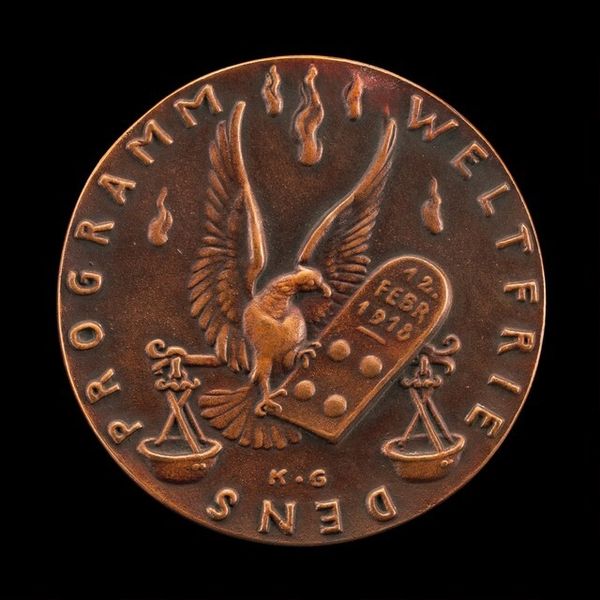![Phoenix [reverse] by Guillaume Dupré](/_next/image?url=https%3A%2F%2Fd2w8kbdekdi1gv.cloudfront.net%2FeyJidWNrZXQiOiAiYXJ0ZXJhLWltYWdlcy1idWNrZXQiLCAia2V5IjogImFydHdvcmtzLzcyOWRmN2M1LTQzMTEtNDE0OS1hZjhkLTY4N2M1NDI0OWQ2My83MjlkZjdjNS00MzExLTQxNDktYWY4ZC02ODdjNTQyNDlkNjNfZnVsbC5qcGciLCAiZWRpdHMiOiB7InJlc2l6ZSI6IHsid2lkdGgiOiAxOTIwLCAiaGVpZ2h0IjogMTkyMCwgImZpdCI6ICJpbnNpZGUifX19&w=3840&q=75)
relief, bronze, sculpture
#
medal
#
baroque
#
sculpture
#
relief
#
bronze
#
11_renaissance
#
sculpture
Dimensions: overall (diameter): 4.3 cm (1 11/16 in.) gross weight: 21.57 gr (0.048 lb.) axis:12:00
Copyright: National Gallery of Art: CC0 1.0
Curator: Here we have "Phoenix [reverse]" a bronze relief medal created around 1620 by Guillaume Dupré. What are your initial impressions? Editor: It’s striking! The texture of the bronze and the raised relief give it a tangible quality. I am immediately drawn to the central image: the majestic phoenix. Curator: Dupré was known for his skill in rendering portrait medals, often tied to political figures or significant events. Medals like these served multiple purposes. They weren't just art objects; they functioned as propaganda, as markers of status and historical documents. The Baroque style also emphasizes dynamic movement and intricate detail, evident in the textures of the bird’s plumage. Editor: Indeed, if we consider the historical context of its production, it likely functioned as more than a beautiful bronze object. Given the laborious casting and intricate sculpting required, and in the social landscape of the era, this was probably aimed at a patron or an important commissioner with vested interests, reflecting certain powers and promoting specific ideological aims. Curator: The phoenix is perched above what looks like flames or a funeral pyre, and an inscription, partly visible, borders the top of the medal: 'RARA CINERE RE..."—a truncated 'RARA CINERE RESURGO' suggesting "I arise rare from the ashes". Consider also the tradition of using classical symbols during the Renaissance and Baroque periods; a figure such as this communicated a deliberate message. What would you read from that visual choice, then? Editor: In that historical and cultural environment, it would definitely imply themes of resilience, rebirth, or the enduring legacy of a ruler or concept. These themes have an incredible public dimension. One also must ask who commissioned the work? What impact or resonance were they hoping it would find at that time? It probably immortalized values they wished to embed in their specific political and cultural climate. Curator: The relief exemplifies a moment frozen in time—a material object imbued with allegorical weight, ready to convey meaning within a network of social relations and political discourse. Editor: I appreciate this chance to re-evaluate how social values shape production, giving a greater appreciation for art's public and civic responsibility. Curator: And I think seeing this not just as a display of craft, but as evidence of artistic labor shaped by the times, helps us understand its purpose.
Comments
No comments
Be the first to comment and join the conversation on the ultimate creative platform.


